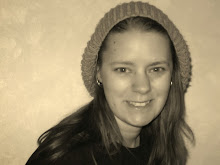Cost and Time
It’s very difficult to cost this resolved sample as much of the materials used were ‘recycled’ from my scrap boxes! It’s tough to cost fabric that was free (people donate old clothes etc to me to cut up). So I guess one way to look at it would be to think about how much things would cost from new. So let’s assume I’ve used the equivalent of 4 fat quarters cut up, so that’s approximately £2 per fat quarter. I used maybe a tenth of a piece of gold organza from a set of two organza curtains I bought from a charity shop for £3.99 (bargain or what!). An eighth of a reel of thread which was on offer at £1 for 4 reels (end of stock deal). Oh and I mustn’t forget that I broke a needle on my machine and needed to replace it so that’s 1 from a set of five value needles purchased for £1.50.
In Summary:
- Fabric: £8.00 + £0.20 = £8.20
- Thread: £0.03 (crikey!)
- Machine needle: £0.30
- TOTAL COST: £8.50
Date the work was started: 6th February 2011
Date the work was completed: 23rd April 2011
Date when embroidered piece was started: 7th February 2011
Date when embroidered piece was completed: 23rd April 2011
Total hours spent on design work: 7 hours
Total hours spent on stitched work: 18 hours
----------------------------------------------------------------------------------
Evaluation

Tutor Question: How do you feel about the resulting conclusion?
I have mixed feelings about my resolved sample. I am pleased with the slashing and clean cutting lines showing the texture/contrast but I don’t feel like they run into each other particularly well. Though if I ran the slashing too far up into the more cutwork areas it would be too much so left an area of ‘background’ untouched to provide some kind of contrast. Looking at it now, though, the area untouched in the middle shows a shape that I didn’t notice before (see image below)! That’s only revealed because it’s untouched so actually I quite like that.

Tutor Question: If you were asked to make it again, what changes would you make to the way you designed it and the way you made it?
If I did this task again I would probably put more thought into my plans before I picked up any fabric. I had an ‘idea’ in my head from the paper design work but I wasn’t 100% sure of what I was going to do. As a result of this halfway through making the piece I came up with different ideas which I think I could have done instead. I made the mistake of just having a bottom layer of blue and then lots of layers of yellow. I think my original idea was to cut away to reveal the blue in various ways but now realise that perhaps I should have layered the blue/yellow throughout. There were lots of layers of gold etc but you can’t really see that at all from what I’ve done. Although the images don’t really do the piece justice if I’m honest. If I did this again I would plan my layers more carefully. And add green. For some reason I feel this is crying out for some green! I don’t know why, I just feel that way! I would enlarge one section and just work with that too. I love slashing so maybe I would just come up with a design that involved the piece going from mega-slashed (as in the bottom left of my existing piece) and then gradually getting less slashed so the shapes become more and more visible with no other technique. Having said that I have ideas about having layers of drawn thread work which is entirely different altogether! The ultimate thing I have learnt here, though, is that whilst it’s lovely to have ideas evolve in front of your eyes, I need to plan much better!



